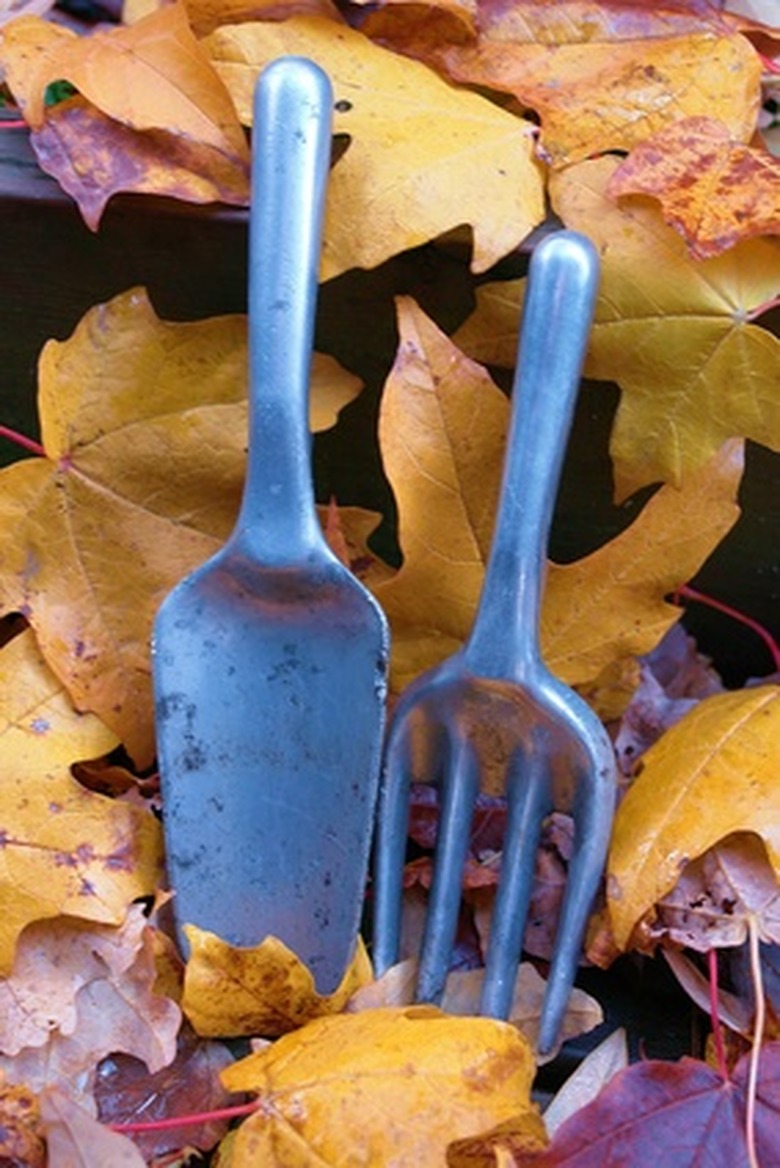How To Kill Crabgrass In July
Healthy, vigorously lawns can easily out-compete a crabgrass infestation. But, in the heat of July, your lawn may be especially stressed. These hot summer months are exactly when crabgrass thrives. Unfortunately, this is also the toughest time to treat crabgrass. It is often resistant to post-emergent herbicide, and the herbicide will not kill the crabgrass seed that will produce future outbreaks.
Step 1
Hand weed your crabgrass with the help of a small spade. Water the grass first to loosen the soil.
- Healthy, vigorously lawns can easily out-compete a crabgrass infestation.
- Unfortunately, this is also the toughest time to treat crabgrass.
Step 2
Spot treat the crabgrass with a post-emergent herbicide listed as safe to use on crabgrass and the type of grass in your lawn. Mow or cut the crabgrass low and allow it to re-grow around 1 inch before spraying it. Coat the crabgrass with the herbicide (according to the manufacturer's instructions) early in the morning on a day when there is no rain forecast for the next 48 hours. Re-spray at the intervals dictated by the manufacturer until the crabgrass is gone.
Step 3
Mow your lawn to a height of 2 1/2 to 3 inches after the crabgrass is gone to help guard against an outbreak the following season.
Step 4
Apply a pre-emergent crabgrass herbicide in early spring. Spray or spread liquid or granular pre-emergent herbicide over your lawn. Re-apply the herbicide at the intervals dictated by its manufacturer.
- Spot treat the crabgrass with a post-emergent herbicide listed as safe to use on crabgrass and the type of grass in your lawn.
- Mow your lawn to a height of 2 1/2 to 3 inches after the crabgrass is gone to help guard against an outbreak the following season.
Kill Crabgrass In July
Crabgrass is an annual weed that typically appears in the spring and — if not dealt with — will last until frost kills it. The three most common crabgrass species are hairy crabgrass (Digitaria sanguinalis), smooth crabgrass (Digitaria ischaemum) and southern crabgrass (Digitaria ciliaris). These species have flat light green blades measuring 5 to 10 mm wide. The crabgrass seeds overwinter in the ground; and, once the soil remains at 55 degrees Fahrenheit or above for an extended period of time, the seeds germinate. To make the process easier, water the soil beforehand. If control cannot be achieved in spring or early summer, the Missouri Botanical Garden suggests forgoing management since the crabgrass will die with frost. Instead, water deeply and less frequently wetting the soil to a depth of about 4 to 6 inches.
- Crabgrass is an annual weed that typically appears in the spring and — if not dealt with — will last until frost kills it.
- The crabgrass seeds overwinter in the ground; and, once the soil remains at 55 degrees Fahrenheit or above for an extended period of time, the seeds germinate.
Things Needed
- Post-emergent crabgrass herbicide
- Pre-emergent crabgrass herbicide
- Spade
- Hose
- Lawnmower
Tip
Timing is an important aspect of the effectiveness of pre-emergent herbicide. Contact your local county extension office or the experts at your local gardening center to discover the best time to apply pre-emergent crabgrass herbicide in your area. The turf specialists at Cornell University recommends methanearsonate and dithiopyr as effective post-emergent herbicides and benefin, dithiopyr and pendimethalin as effective pre-emergent herbicides.
